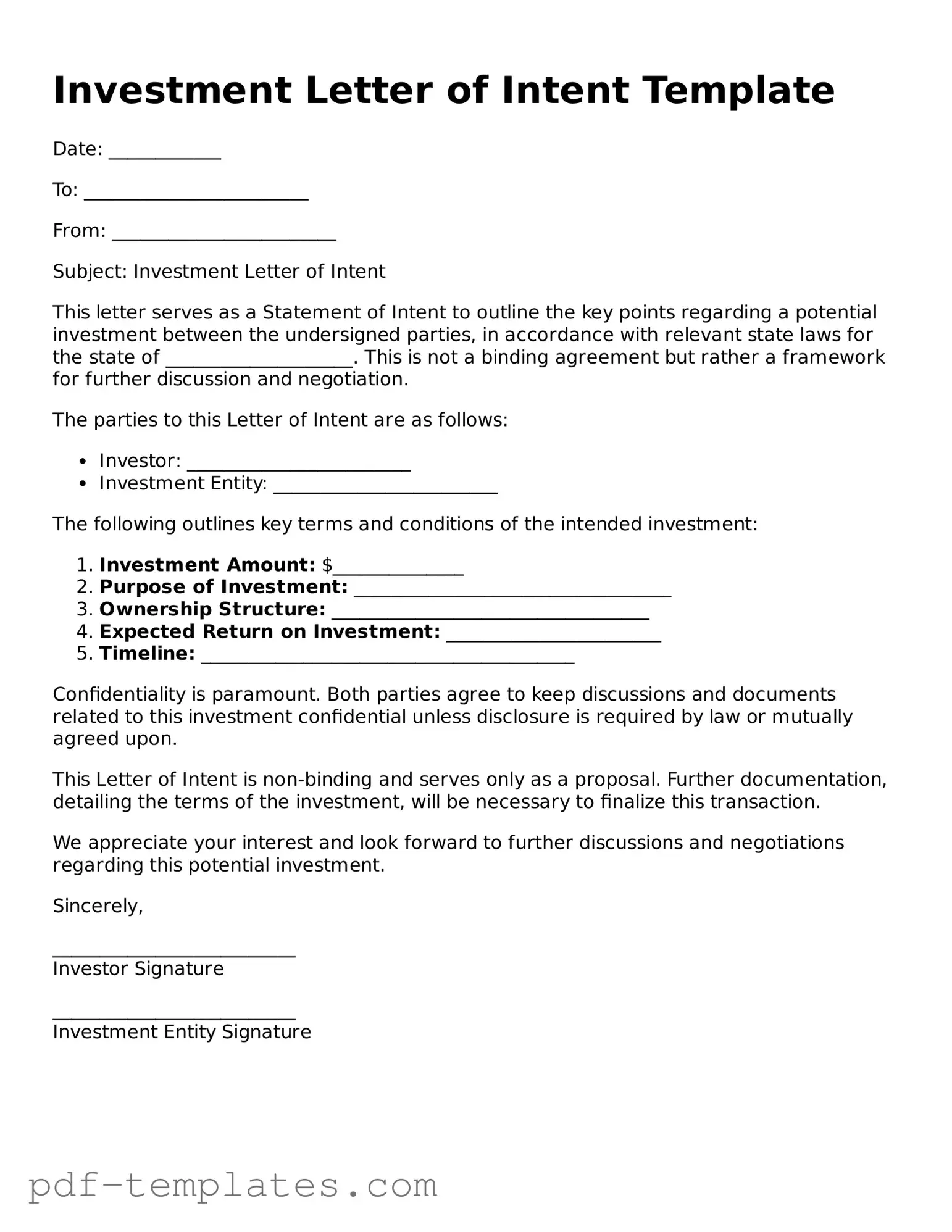Investment Letter of Intent Document
The Investment Letter of Intent form is a preliminary agreement that outlines the terms and conditions under which an investor intends to make an investment in a business or project. This document serves as a foundation for further negotiations and helps clarify the expectations of both parties involved. For those looking to formalize their investment intentions, filling out the form is a crucial first step; click the button below to get started.
Customize Form Now
